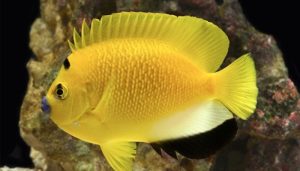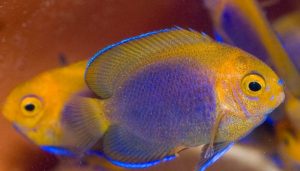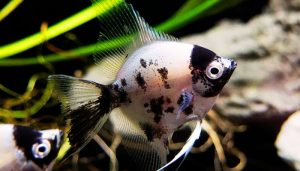What does a dead nerite snail look like? Have you noticed your Nerite snail motionless for days and wondered if it’s still alive? These small but essential tank cleaners sometimes appear lifeless, making it tricky to tell if they’re just inactive or truly gone. Understanding the signs of a dead Nerite snail is crucial to maintaining a healthy aquarium.
A dead Nerite snail often smells rotten like the fish, remains upside down without attempting to flip over, and shows no reaction to touch.
Common causes include poor water quality, starvation, or old age, as these snails typically live for one to two years.
If you suspect your snail has died, immediate removal is necessary to prevent ammonia spikes and harm to other tank inhabitants.
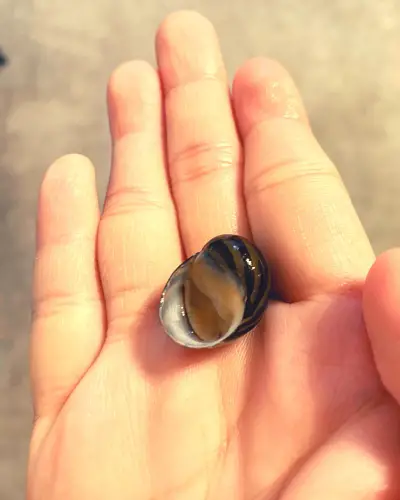
If you’re concerned about their status, deceased snails tend to emit an unpleasant odor fairly quickly. You can check by giving it a sniff; if the smell test is strong enough to make you gag, then it’s likely dead.
But how do you differentiate between a sleeping, inactive, or dead snail? And what should you do to ensure the rest of your aquarium stays balanced?
Let’s dive deeper into the key signs, causes, and essential steps to handle a dead Nerite snail properly!
Table of Contents
ToggleIs My Nerite Snail Dead Or Sleeping?
Determining whether your nerite snail is dead or simply sleeping can be tricky. Nerite snails, like many aquatic creatures, can appear motionless for extended periods, leading many owners to worry that their nerite is dead.
A good first step is to observe your snail closely; if it remains unresponsive to gentle prodding or movement, it’s possible that the snail is indeed dead.
Additionally, if your nerite snail does not retract into its shell when disturbed, this can be a strong indicator that it has passed away.
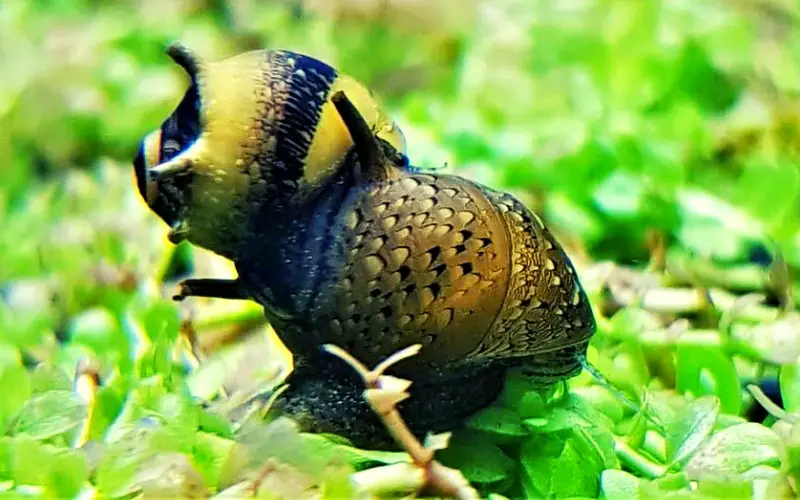
Another important aspect to consider is the condition of the snail’s shell. A healthy nerite snail will have a firm, intact shell, whereas a dead snail may exhibit signs of deterioration or discoloration.
If you notice a foul smell emanating from the vicinity of the snail, this is often a telltale sign that the snail has died and is decomposing. It is critical to differentiate between a sleeping snail and a dead one, as the latter can negatively impact the water quality in your aquarium if not promptly addressed.
How to Recognize a Dead Nerite Snail?
How to tell if Nerite snail is dead? Recognizing a dead nerite snail involves several key signs. One primary indicator is the presence of a foul smell in the aquarium, often described as a rotten or sulfurous odor.
This smell typically arises when a snail has died and begins to decompose. Additionally, if the snail is motionless without any signs of life for an extended period, it is advisable to investigate further.
Gently nudging the snail can help determine whether it is alive; if it does not respond, it may very well be dead.
Another sign to watch for is the condition of the snail’s shell. A dead nerite snail may have a discolored or decaying shell, which is a stark contrast to the vibrant patterns of a healthy one.
Moreover, if you notice the snail’s trapdoor, which is used to close its shell when it feels threatened, is open and remains so, this could be another indication that the snail has died.
Keeping an eye on these signs can help you act quickly to maintain the health of your aquarium’s ecosystem.
Remember: While some freshwater snails, like pond and bladder snails, do not possess trapdoors, most do have them. The trap door stays shut when the snail is alive but will open rapidly once the snail has died. Gently pull the trapdoor open a little at a time.
5 Reasons Why Your Nerite Snails Keep Dying:
Why Did My Nerite Snail Die? Understanding the potential reasons behind the death of your nerite snails can help prevent future losses.
One common cause is poor water quality; high levels of ammonia or fluctuating pH can negatively affect your snail’s health. Regular water changes and monitoring of water parameters, such as ppm of calcium and ammonia, are essential in maintaining a safe environment for your aquatic pets.
Additionally, inadequate food sources, particularly the absence of algae or other plant matter, can lead to malnutrition and eventual death.
Another significant factor is the lack of proper acclimatization when introducing new nerites into the aquarium. If they are placed directly into the tank without a gradual adjustment to the water conditions, they may experience shock and die very soon.
Furthermore, tank mates such as aggressive fish or shrimp can pose a threat to their safety, leading to stress and potential death. Finally, overpopulation in a tank can lead to competition for food and resources, contributing to the decline in snail health.
Can I Leave a Dead Snail in the Tank?
Leaving a dead nerite snail in the tank is not advisable. When a snail dies, it can quickly decompose, releasing harmful substances into the water that can compromise the health of your aquarium’s ecosystem.
As the dead snail breaks down, it can lead to increased ammonia levels, which are toxic to both fish and live plants. This can create a detrimental cycle, affecting the entire tank’s water quality and harming the remaining inhabitants.
To ensure the health of your aquarium, it is crucial to remove the dead snail promptly. Gently scoop the snail from the water and dispose of it, being careful not to disturb the surrounding gravel or substrate excessively.
After removal, performing a water change can help mitigate any potential spikes in ammonia or other harmful compounds. Regular monitoring of the water parameters should follow to ensure that the tank remains a safe environment for your aquatic life.
FAQs
How can I tell if my nerite snail is dead?
There are several signs which confirm that a nerite snail dead. Look for a lack of movement, a foul smell coming from the tank, or if the snail’s body is not retracting into its shell when touched. If you see the body of the snail and it smells bad, it is likely dead.
What are common reasons for a nerite snail die?
There are various reasons that can cause a nerite snail to die, such as water quality issues, lack of food, or the presence of parasites. Additionally, if the water contains copper or chlorine, it can be harmful to the snail.
Can a nerite snail survive in freshwater without acclimatization?
Nerite snails are freshwater snails that require specific conditions to thrive. If placed directly into a new aquarium without acclimatization, they may not survive for an extended period.
What should I do if my nerite is dead?
If you determine that your nerite is dead, it’s important to remove it from the tank immediately to prevent water quality issues. You can dispose of the body and monitor the aquarium for any signs of distress among other inhabitants. It’s also a good idea to test the water parameters and ensure they are suitable for your freshwater snails.
How can I improve the health of my nerite snails?
To improve the health of your nerite snails, ensure that they have a balanced diet and access to algae growth, which they naturally eat. Additionally, consider using cuttlebone in the aquarium to provide calcium for their shells. Regular water changes and maintaining good tank conditions will also help keep them healthy.
What should I check for if my nerite snail is not moving?
If your nerite snail is not moving, first check the water quality parameters such as pH, ammonia, and nitrates. Ensure that the water is free from chlorine and harmful chemicals. Also, observe the snail for any physical signs of distress or injury, and make sure there are no signs of a food deficiency.
What are the signs that my nerite snail is stressed?
Signs that your nerite snail is stressed can include not eating, staying hidden for long periods, or being inactive. If you notice any changes in behavior, it may be necessary to adjust tank conditions, such as temperature and water chemistry, to reduce stress.
Can I keep nerite snails in a planted tank?
Yes, nerite snails can be kept in planted tanks as they are beneficial algae eaters. They help remove algae growth from plants and surfaces. Just ensure that the plants are not sensitive to the snails’ movement and that the tank conditions are suitable for both the snails and the plants.
Where can I purchase nerite snails and related supplies?
You can purchase nerite snails and related supplies from pet stores, online retailers like the petnanny store, and various social media platforms. Make sure to check reviews and forums for recommendations to ensure you are buying healthy snails and quality supplies.
Conclusion
In conclusion, recognizing the signs of dead nerites and understanding the underlying causes can greatly benefit your aquarium management. By observing your snails closely, ensuring proper water quality, and maintaining a balanced tank environment, you can help reduce the risk of nerite snail’s death. If you encounter a dead Nerite snail, take immediate action to remove it and monitor your tank’s conditions to ensure the health and longevity of your remaining aquatic pets. With the right care, your nerite snails can thrive and contribute to a healthy aquarium ecosystem.
You might also like
- Do Snails Eat Fish Poop in Aquarium: (The Truth Revealed)
- Nerite Snail Not Moving: Is It Normal? (Causes & Quick Fix)
- Do Nerite Snails Eat Plants in Tank? (The Shocking Fact)
- How Long Do Nerite Snails Live: A Comprehensive Care Guide
- Baby Snails Appeared in My Fish Tank Good OR Bad! (Surprise)
- Can Nerite Snails Live Out of Water: (You’ll Be Shocked)
- Do Rabbit Snail Hibernates: (Secret Winter Survival Trick!)


